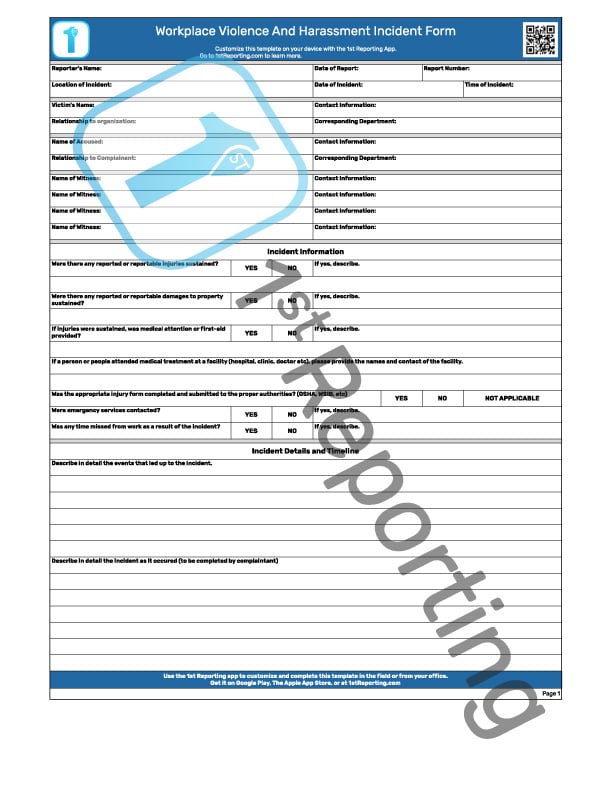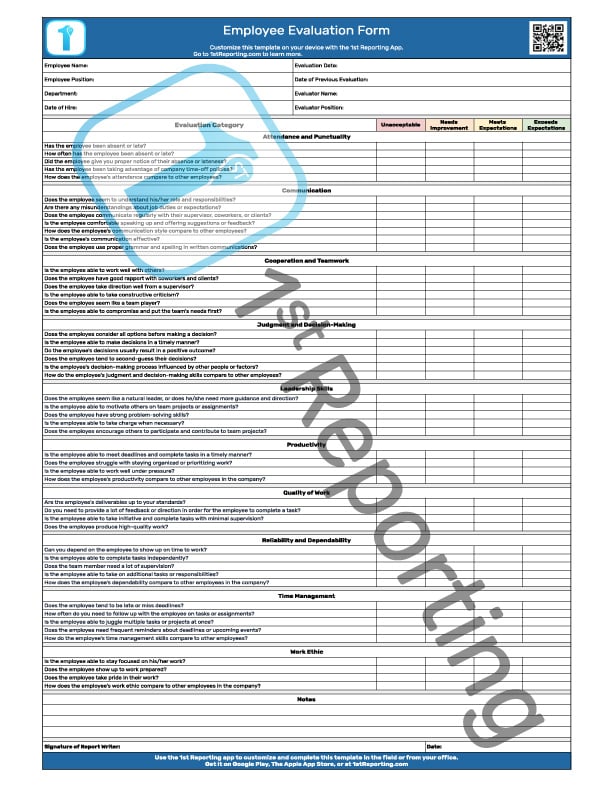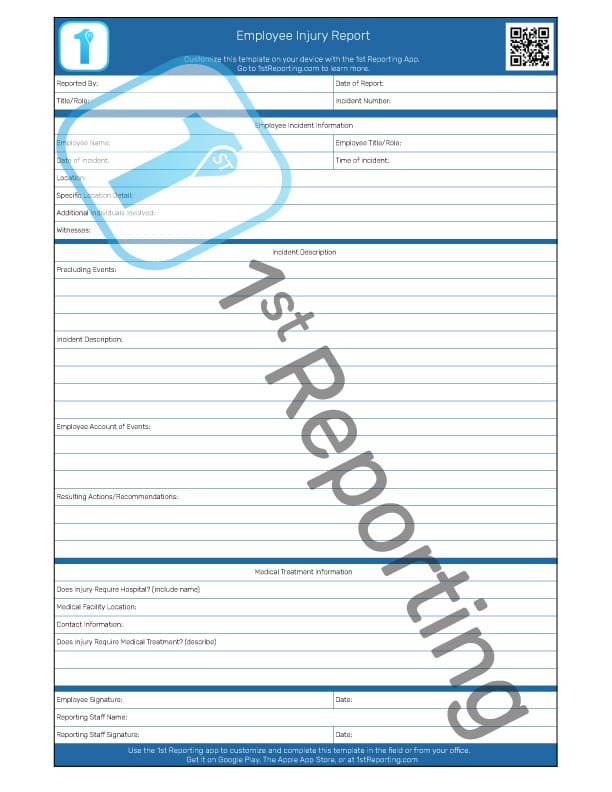No one wants to deal with workplace violence or harassment issues, no one. However, when the situation arises, managers have to step up and take control of problems before they escalate. And naturally, this entire process requires documentation. To make this easier, we’ve got a free downloadable template you can print and use to document cases of workplace harassment, violence, or similar incidents.
A workplace harassment incident form (also called a violence and harassment incident template) is used by organizations to document incidents of violence and harassment in the workplace. It is a vital tool in the documentation process and aids with creating preventive and mitigating strategies.
Let’s get right into this and dive into the Workplace Violence and Harassment Template. We have it downloadable for you today, so take a few moments and familiarize yourself with the template via this guide. We’re also going to include some handy tips to help you manage these dreadful situations when they do arise. So, please stick with us for tips to make your job easier and these incidents less cumbersome for you to deal with when they occur.
Included in the Workplace Violence and Harassment Incident Form
The violence and harassment template we’re providing you with is broken into three pages. The first two pages form the bulk of the primary document. The third page is an additional testimonial page to record each person’s testimonial of the incident. We’ll explain each segment in greater detail below for clarification and to aid you in understanding the intent for each segment’s use.
Page One
The first page of the Workplace Violence and Harassment Incident Form (labeled P1 in the upper right-hand corner of the document) consists of quick reference information segments. These primary information segments constitute the first four segments of the document, each separated by a thin grey separator.
The first segment includes areas to record the incident report writer’s name, the date of the report, a report number (your company should assign a record number for record-keeping purposes). The segment also includes a place to record the incident location and the date and time of the incident occurrence.
The following segment of the workplace harassment incident form includes areas to record incident injury and damage information. Again, this segment is intended to act as a quick-reference area. It is understood that if injury or damage to property is a result of the incident, your team will document those incident types on their specific and appropriate supplemental documents. Examples of these other incident forms that you may include could be the Employee Injury Form or even a Fleet Repair Request Form if the incident involved damage to a company vehicle. These supplemental documents would be added to this template as additional information and copies of each filed together with the harassment incident form.
The incident details and timeline segment follows to complete the first page of our Workplace Violence and Harassment Incident Form. This segment is defined by two sections, one to document potential events that may have led to and contributed to the incident occurrence. The second section is an area where the complainant may complete to include their version of the incident. This section should not be confused with the third page, which we’ll explain after going over page two.
Page Two
The second page of the Workplace Violence and Harassment Incident Form is a long-form text document recording area divided into three primary segments.
The first segment includes a large blank area for the report writer to have the immediate response and actions taken to respond to the incident. Following this segment similarly allows the report writer to include the preventive and corrective measures they recommend to prevent or mitigate the incident from recurring.
The third segment is an area where we are again looking at a point-form, quick reference segment. This segment allows for a quick point about the testimony of each person involved in the incident, possibly utilizing the testimonies of four witnesses.
On the far right of this segment, you will notice that there is an area to circle either yes or no to include a supplementary testimonial page.
The report writer signs and dates the document at the end of this page two. Following this page, you’ll find page three – the supplementary sheet template.
Page Three
The third page of the incident form is an interview template you can use for interviews with the complainant, the accused, and any others involved, such as witnesses. The intent behind this form is that you can print as many sheets as you need and merely label the sheet number yourself to correspond with the incident form in the upper right-hand corner of the page. This numbering system will allow you to maintain order over your Workplace Violence and Harassment Incident Form and allow for easier referencing of data.
How To Use the Workplace Violence and Harassment Incident Form
Using our downloadable workplace violence and harassment form is easy. All you need to do is download the form, print it, and use it. It’s pretty simple. However, there are several things you should consider when using a form like this.
First, you need to have an intelligent way of printing, storing, and filing your forms. We recommend printing and distributing amongst your branches and managers so they can include the record as a part of their standard operating procedure.
You will also want to ensure that you have the proper training for all of your managers to know how to best deal with these sorts of incidents and know the appropriate methodology for recording information about the incident.
Let’s jump into a few great tips to help you manage violence and harassment incidents in your workplace.
Tips To Effective Workplace Violence Incident Management
Keep Communication Open
When staff feels embarrassed to come forward to discuss workplace harassment, it enables those responsible to continue or even escalate the violence or harassment. Assuring staff that they can always come forward and that your team will effectively mitigate the situations is the first step to keeping a happy and safe team working efficiently together.
Understanding that harassment is a form of discrimination that violates laws in most civilized countries (such as the Title VII of the Civil Rights Act of 1964 of the United States) is vital to understanding how you must keep communication open with your team. They must feel comfortable communicating any violations of workplace civility. (source)
Lead By Example
Some managers take a coach-like approach to management and can mistake being friendly with being professional. When team members witness an overly casual or overly friendly manager, it shows them that they can also act in a highly casual or excessively friendly manner. Lead your team by example with pure professionalism and give them no reason to follow anything else.
Set Clear And Concise Policies
To properly communicate and effectively manage a business policy on violence and harassment in the workplace, the business must clearly define what violence and harassment are. Unfortunately, there might be grey areas when communicating, so ensuring that your organization has a clear mandate about what is acceptable and what is not is vital to controlling potential harassment or violent incidents within the workplace.
Remember to have your legal counsel review your policy to ensure compliance with local laws.
Schedule Recurring Training and Awareness Campaigns
It’s one thing to create a clear zero-tolerance policy. It’s something else to put into practice. The critical step to the implementation of a robust violence and harassment policy is training.
We recommend training staff in various things including, but not limited to:
Understanding violence and harassment as defined by your company policy
Understanding the value of sensitivity to others and the need for a supportive team atmosphere
Dealing with harassment (what your policy says staff should do if a harassment or violence incident should occur).
Foster A Supportive Team Culture
People are far less likely to bully or harass each other when others are around and are supportive of each other. A harassment incident could be stopped immediately by team members present, but only in a safe situation for them and where they support one another.
As a manager, it’s your job to lead by example. Showing your staff that you support a team player mentality where team members are supportive and helpful to each other will help to prevent harassment situations in the first place.
A survey completed in 2016 outlined how 55% of respondents said their workplace morale suffered from incivility at work. And 25% of employees said they had quit a job due to these poor sorts of conditions. These numbers outline the importance of making a culture at work where team members feel supported, not harassed. (source)
Train Management in Mitigation Techniques
Management must lead by example, as mentioned, but more than this, management must know how to step in and resolve these conflicting incidents. Special training may be a requirement, and in some places is mandated by law that managers have special training.
Managers must understand how to recognize and how to mitigate violent or harassing individuals. And this mitigation must be completed professionally, with tact, and with the ability to de-escalate a stressful situation. This challenge is not for the faint of heart, and thus special training is often a legislative requirement.
Create A Supportive Reporting Process
Let’s face it; some people will feel pressured into keeping their mouths shut when it comes to workplace harassment. Often when a person can threaten another in one form or another (like a person with tenure threatening to get a new worker fired if they say anything), it can escalate into a situation where a team member is bullied. If a workplace has a supportive and sensitive reporting process that keeps staff feeling safe, they are much more likely to report workplace harassment or violence.
Similarly, you must ensure that your process in no way makes the victim feel dehumanized. It should involve using the correct team managers for the interviews of those involved and ensuring that no retaliatory actions may be taken towards the victim. Often in these cases in male-dominated industries, women feel inferior if they are to complain of harassment. It is vital that you create a supportive reporting process so no one will feel like they cannot come forward when they are victims. And if they do, the process should be supportive and not difficult or belittling to the complainant.
Use a Digital Mobile Form Reporting App or Software
Several things make a digital reporting solution an excellent solution to your reporting needs. First, if the solution is cloud-based like the 1st Reporting app, sharing reports can happen instantaneously. This fact is vital to quick response to incidents.
Another benefit to a digital reporting mobile solution is that staff can access and complete reports from their mobile device. What better way to mitigate a team member’s fear of completing a report when they can do so right from their smartphone? For harassment incidents, in particular, a mobile form automation solution is critical to helping team members file reports on the fly.
Now that you’ve got a guide and downloadable template for your harassment incidents, try putting it in place, and hopefully, you never need to use it. But, if you’re ready to move from the old printed templates and filing cabinets methodology to a secure paperless mobile solution, check out the 1st Reporting app – available on both Google Play and The Apple App Store.








